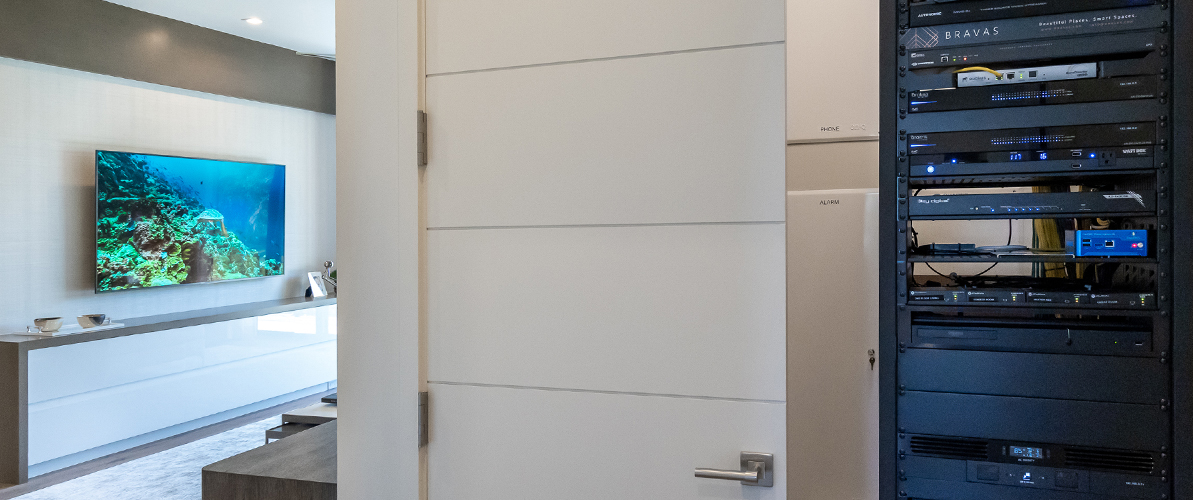
Why the Right Home Network Makes all the Difference in Luxury Homes
Using the internet at home has become much more complex than asking Google something or replying to an email. We stream Netflix in 4k, queue up our “release radar” playlist on Spotify, and play high definition/multiplayer video games, all while our loved ones are doing something similar in the next room. If you experience lag or glitches using your home network you may need to rethink your solution. It’s been said that if you're thinking about your network, there's a problem with your network.
Read on for some tips on getting the most robust home networking solution possible in Luxury Smart homes.
Enterprise-Class Networks
Your Internet providers' job is to sell you a service, but once you're in the home, there's not much they can do other than give you a faster pipe to your home. Most end users probably have a bigger pipe than they even need, but the hardware included from your ISP are designed around the typical home and the typical homeowner. That would mean about 2000 square feet and doesn't include the number of spaces we expect to see in an integrated luxury home. An enterprise-class solution or even just a more robust network considers the size, scale, and more challenging construction materials that we tend to see in luxury homes.
Luxury Home Building Materials
Most homes are generally made of wood and sheetrock and are not much of an issue for RF signals, but some luxury building materials like stone and masonry, poured concrete, radiant heat, floor to ceiling mirrors, and electronic glass are going to be an issue when it comes to blocking RF signals. In these situations, it's essential to get a little more creative from a design perspective. Strategic placement of access points, and in some cases, even using multiple ISPs, may be required to get proper coverage and reliability in large spaces.
Use a Mix of Wireless and Wired
End users typically interact with their network wirelessly, and most often, the pain points they perceive are wireless issues. Because of this, wired infrastructure is just as important, sometimes more so, because the wireless access points also live on the wired infrastructure. So, for example, if you have smart TVs or Sonos-type speakers that can be wired on your network, it will make sure that you're going to have more robust performance on those wired devices. It will also take the load off the network for other devices like your iPhone and other integrated equipment in the home that put a strain on the network.
Segregate the Traffic
Another strategy is to segregate traffic based on different disciplines or different users. A good example is if a home has multiple security cameras hogging up a lot of bandwidth, and we don't want to impact the homeowner who will be trading from one of their terminals, we can keep that traffic separate. We can set priorities of one over the other. We could even manage the kids' traffic over a different internet connection entirely so that the ongoing game of Fortnite isn't eating up all the bandwidth while Mom and Dad are trying to get important work done. Finally, from a security perspective - if you're having guests stay with you, always put them on a dedicated guest network. Although you may trust them a great deal, they may not realize that their phone or laptop has been infected with some kind of malware. Putting them on a separate, isolated guest network will protect your devices from malicious attacks that can put you at risk.
Scale Your Network to Match your Home
When it comes to home networking, one of the most important things to realize is that your network should scale with your home. Networks should be thought of in the same way as cabling for the home or the labor that's required to do all the integration. If you increase any one area of your project, the network infrastructure will need to scale with it, so your devices work on the strongest foundation possible.
We're here to help! Contact BRAVAS Atlanta to find out how we can bring a robust network to your home.
For more about home networking, check out our recent Podcast with Access Networks here.











